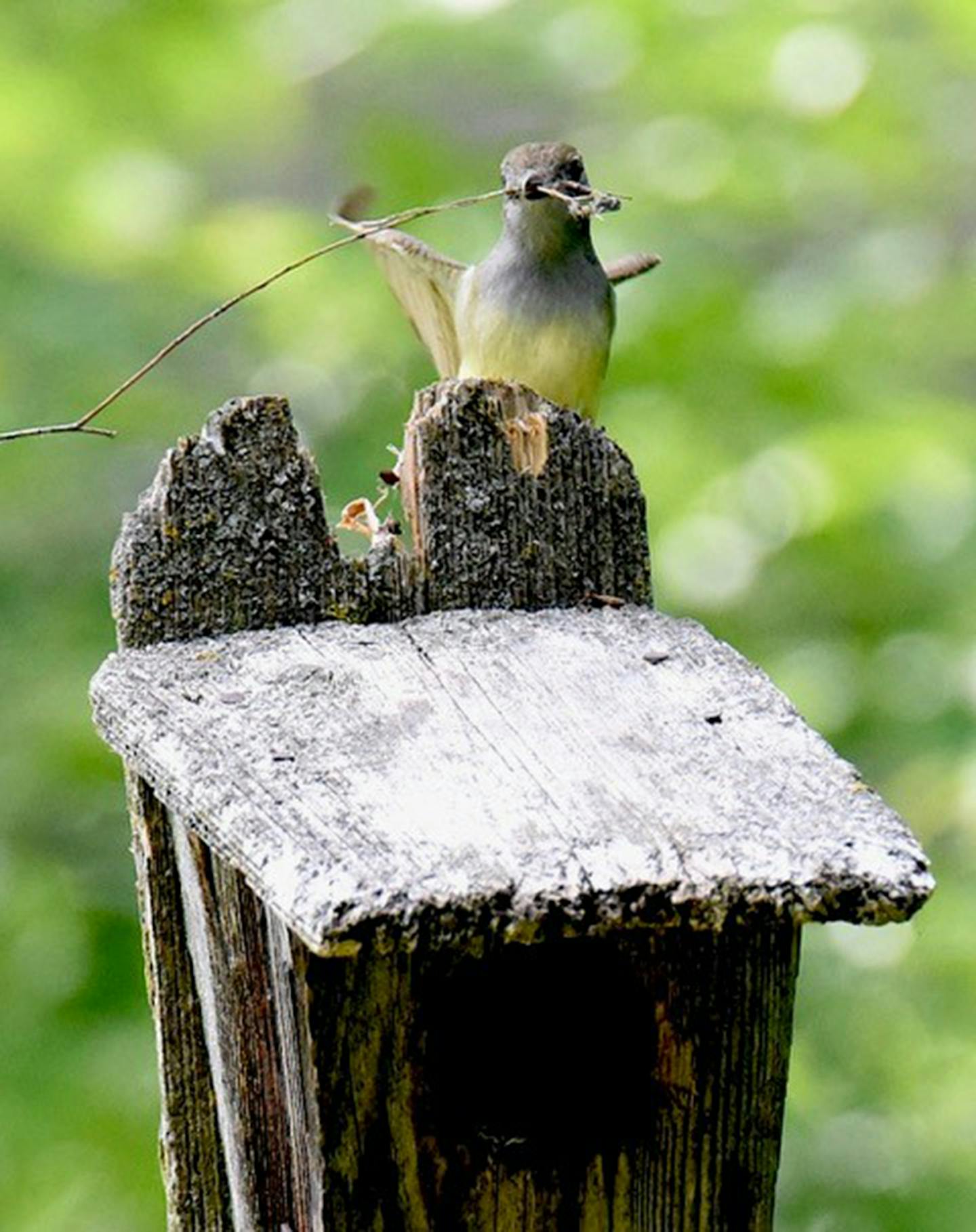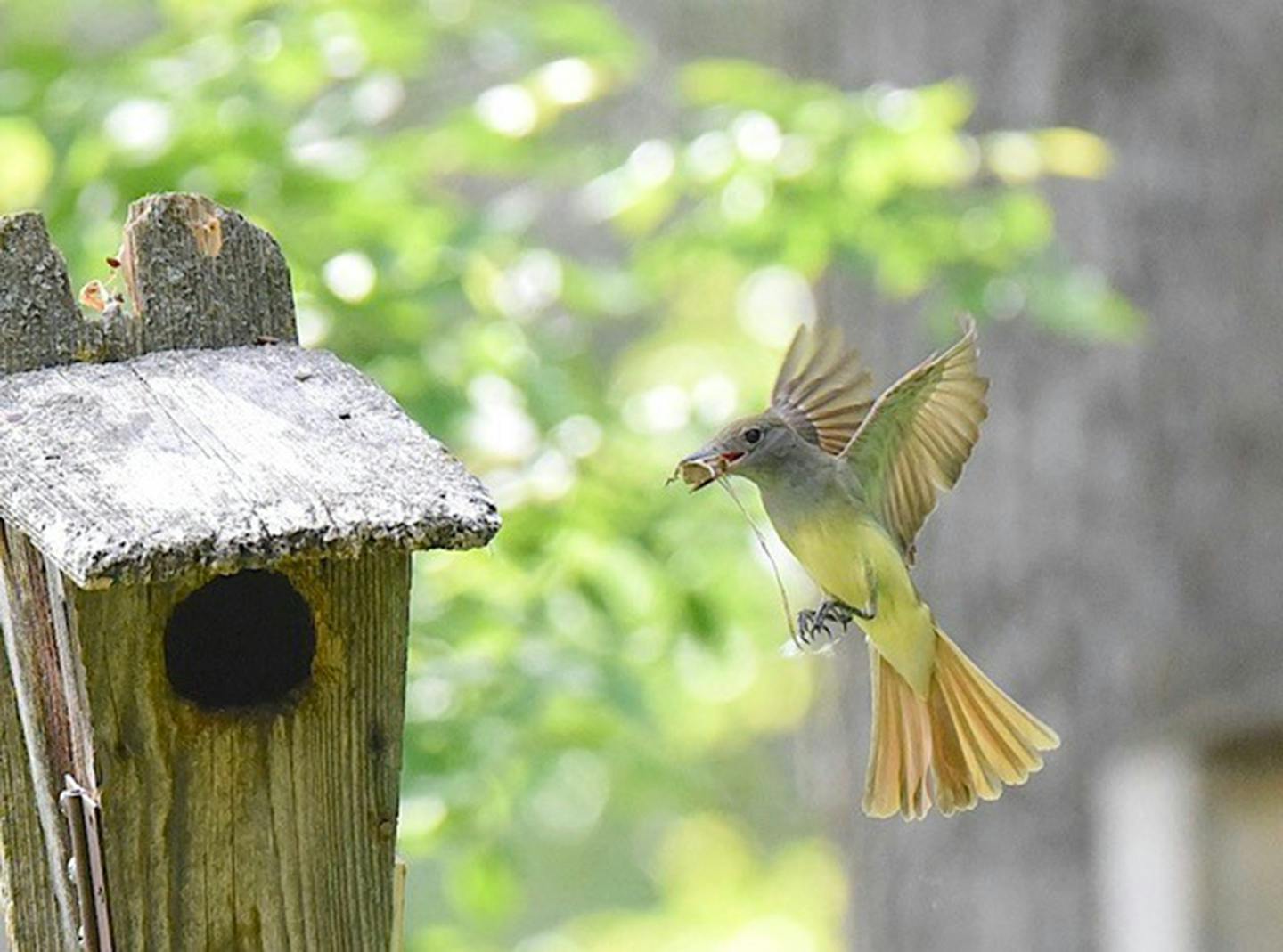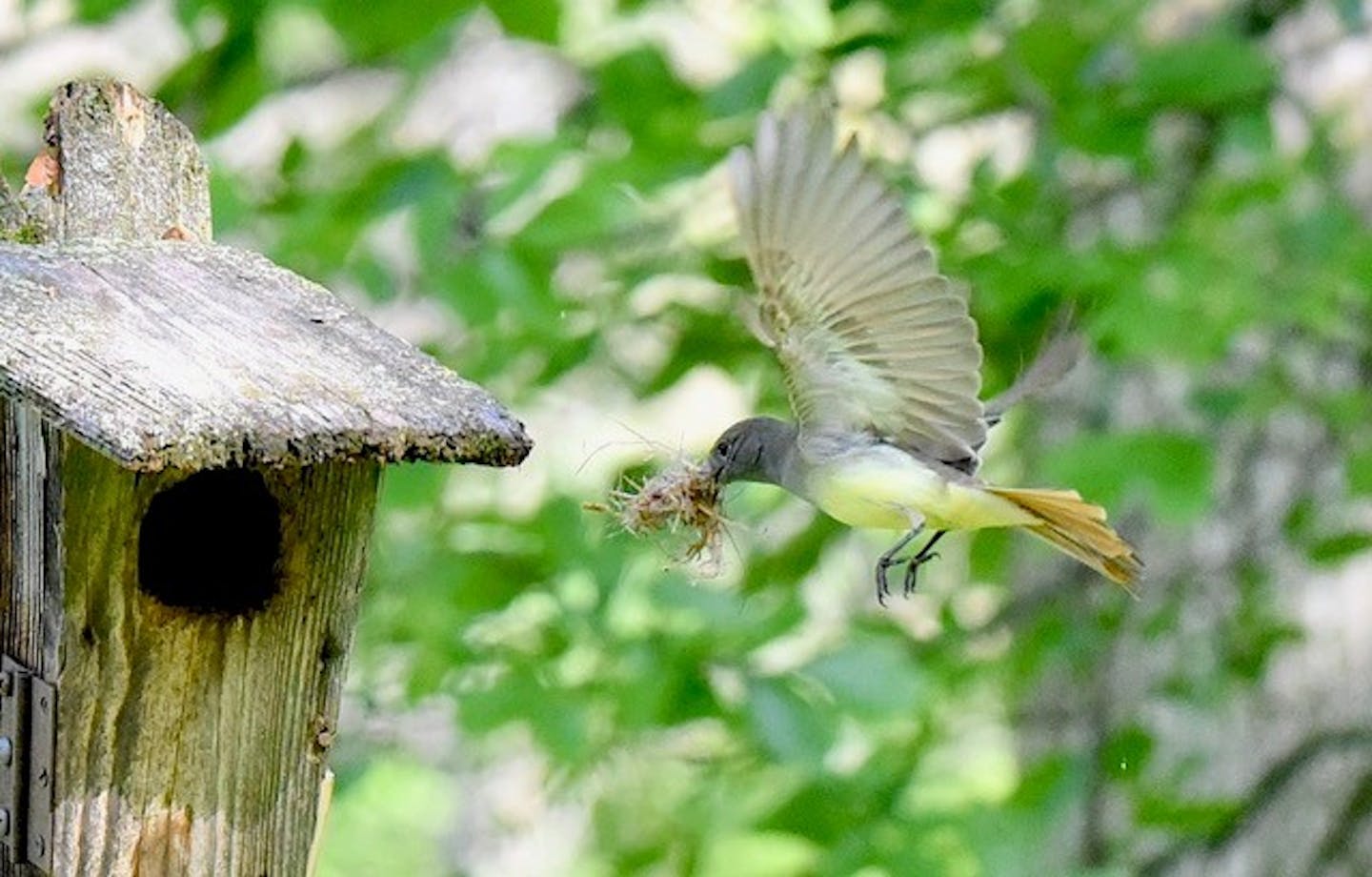Flycatchers are members of a big North American bird family, 21 species, many relatives. If they had a reunion some probably would need name tags so they could tell one from another.
Identification for some of them can be challenging.
Minnesota has seven breeding flycatcher species. None are feeder birds, all are habitat-specific.
Great crested flycatchers, our bird of the day, prefer open deciduous woodlands and edges of clearings, according to its account in the "Birds of North America" pamphlet series.
Urban areas with large shade trees qualify, as do parks, cemeteries and perhaps your neighborhood.
If so, this flycatcher needs no name tag. It is particularly on the easy-ID side. You might puzzle a moment or two on plumage, but if you hear it there should be no question.
Great crested flycatchers do not sing. They yell, both sexes. They command attention. This is evident during nesting season, when the birds are looking for a mate — screaming for a mate.
David Allen Sibley is his identification book describes the "song" as queEEEP or KRREEEP, a long, loud, rising note. There are some softer notes, too, as Sibley says, "all often combined into excited series — KREEEP, KRREEP, kwip-kwip-kwip-kwip-kweep, krreep."
Once you've heard this bird you are unlikely to forget it. I first heard one in the Carver Park Reserve when one was right above me: What the devil was THAT?
Flycatchers as a family are well named. The great crested will perch where it has clear view of insect flight space, darting out to snatch prey from the air.
It also will snap insects from leaves and branches and occasionally pursue them on the ground. It does not run after them; it hops. Insects are the bulk of its diet.
For several years we've had the great crested in and around our yard during mating season. They need cavities for nesting, fruitlessly searching first for tree cavities, as usual for birds with this need.
Our visitors then would examine duck-nesting boxes not in use.
Sitting in the entrance for a minute or two, they were perhaps wondering how to furnish all of that space.
The recommendations for construction of a nesting box for this species call for floor space of 25 square inches. Wood duck boxes do not qualify.
A few weeks ago, early June, as our visitors yelled at each other I resurrected a weather-worn box built with flicker woodpeckers in mind. A bit of lath and some wood glue patched it up.
An old duck-box mount was available. The female of the pair was building her nest within an hour. The natural-cavity shortage is the avian version of any port in a storm.
I watched the bird bring twigs, dead grass stems and fallen leaves to the box. Literature says they also will use feathers, hair, string, strands of rope, bark, paper and sometimes old snakeskin.
Some authors have suggested that snakeskin was used in all of this bird's nests, possibly as a scarecrow. My source says not so. The skin, if used, is just another construction material.
The sexes look closely alike. In our yard it was the female doing most if not all of the nest work. Her mate perched nearby, loudly offering encouragement or advice that was likely unneeded.
That does happen.
Lifelong birder Jim Williams can be reached at woodduck38@gmail.com.
Other flycatchers
Minnesota is the western edge of crested flycatcher breeding range.
Other members of the flycatcher family found here are Acadian, alder, ash-throated, least, olive-sided, willow, and yellow-bellied. Brown and gray are predominant colors in most cases. Songs of the Acadian, alder, willow, and least are little more than a hiccup or a gulp, unmusical in a very different way.
To our west are vermilion, dusky, dusky-capped, ash-throated, brown-crested, buff-breasted, cordilleran, forked-tailed, gray, Hammond's, La Sagra's, Pacific-slope, and scissor-tailed.









